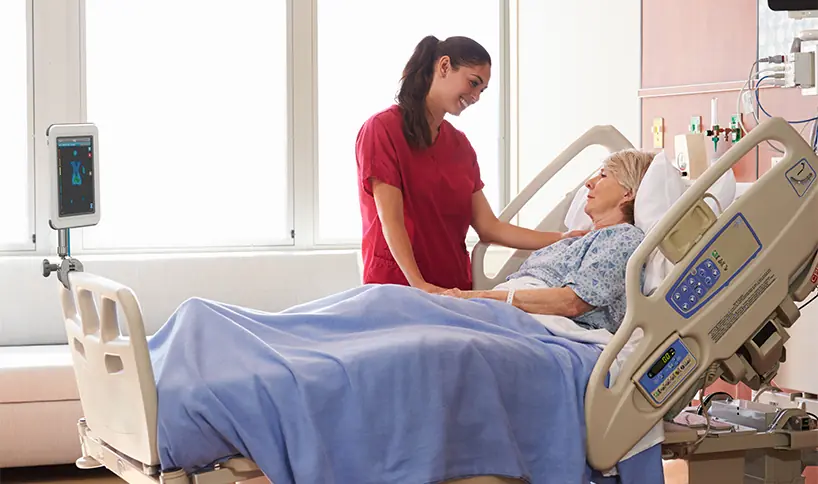VŪ customer stories:
Improved care,
healthier patients.

The success of the Wellsense VŪ system isn’t theoretical. It’s been used in hospitals and ICUs around the country—hospitals that shared their success stories with us.
Chapel Hill, North Carolina
UNC Health
Before VŪ:
- Ranked third from last out of 81 hospitals for stage 3 pressure ulcers (PSI-03)
- In the bottom 10% of peer institutions, according to National Database of Nursing Quality Indicators (NDNQI)
- 48.7% of hospital acquired pressure injuries (HAPIs) were support-surface-related
After VŪ:
- 2020: Equipped 46 beds in (2) ICUs with the VŪ System. 35% reduction in pressure injuries, despite significant COVID challenges.
- 2021: Increased the number of VŪ equipped beds to a total of 84. Pressure injuries reduced by 45% across (4) ICUs.
- 2022: Expanded the number of VŪ equipped beds to a total of 143, across all (7) ICUs.
- 2023:
- CVTICU – PIs have declined 60%
- MICU – PIs have declined 71%
- SICU – PIs have declined 74%
Orange County, California
UCI Health
Before VŪ:
- On a 1 to 5 scale (1 best, 5 worst) within the UCI Healthcare System, the SICU and CVICU ranked #3 for Stage 3, 4 or unstageable PIs, and #5 for PSI-03.
After VŪ:
- 2020:
- Zero reportable HAPIs in the SICU and CVICU, despite significant COVID challenges
- PSI-03 Rank within UCI Healthcare System: #1 – Best
- 2021 & 2022: Zero reportable HAPIs in the SICU and CVICU
Wilmington, Delaware
Christiana Hospital
The hospital’s Medical Intensive Care Unit (MICU) employed the use of the VŪ system in October 2019, just before the COVID-19 pandemic.
Even with the added case load of the pandemic, the results were amazing:
- By February 2022, pressure injuries had been reduced 91%.
- The MICU was awarded a gold-level Beacon Award for critical care nursing excellence, making it the only health care institution in the state to have a gold-level MICU.
Baltimore, Maryland
Johns Hopkins Bayview
Traditional PI prevention measures are complicated by the compromised skin barrier of BICU patients. This often leads to increased HAPI rates and a higher cost of care.
Pressure Mapping Study* concluded utilization of the VU System in this challenging patient population decreased HAPI rates and costs.
- Zero (0) Full Thickness pressure injuries developed.
- Overall HAPI rates declined 56%.
- Implementation resulted in significant cost-savings in HAPI-related care.
*Yesantharao PS, El Eter L, Javia V, Werthman E, Cox C, Keenan J, Moseley R, Orosco R, Cooney C, Caffrey J. Using Pressure Mapping to Optimize Hospital-Acquired Pressure Injury Prevention Strategies in the Burn Intensive Care Unit. J Burn Care Res. 2021 Aug 4;42(4):610-616. doi: 10.1093/jbcr/irab061. PMID: 33963756.
Miami, Florida
Baptist Hospital of Miami
2021: Installation of 12 VU Systems on 48-bed Unit
2022: Equipped remainder of Unit (36 beds) with VU System and achieved 61% reduction in pressure injuries